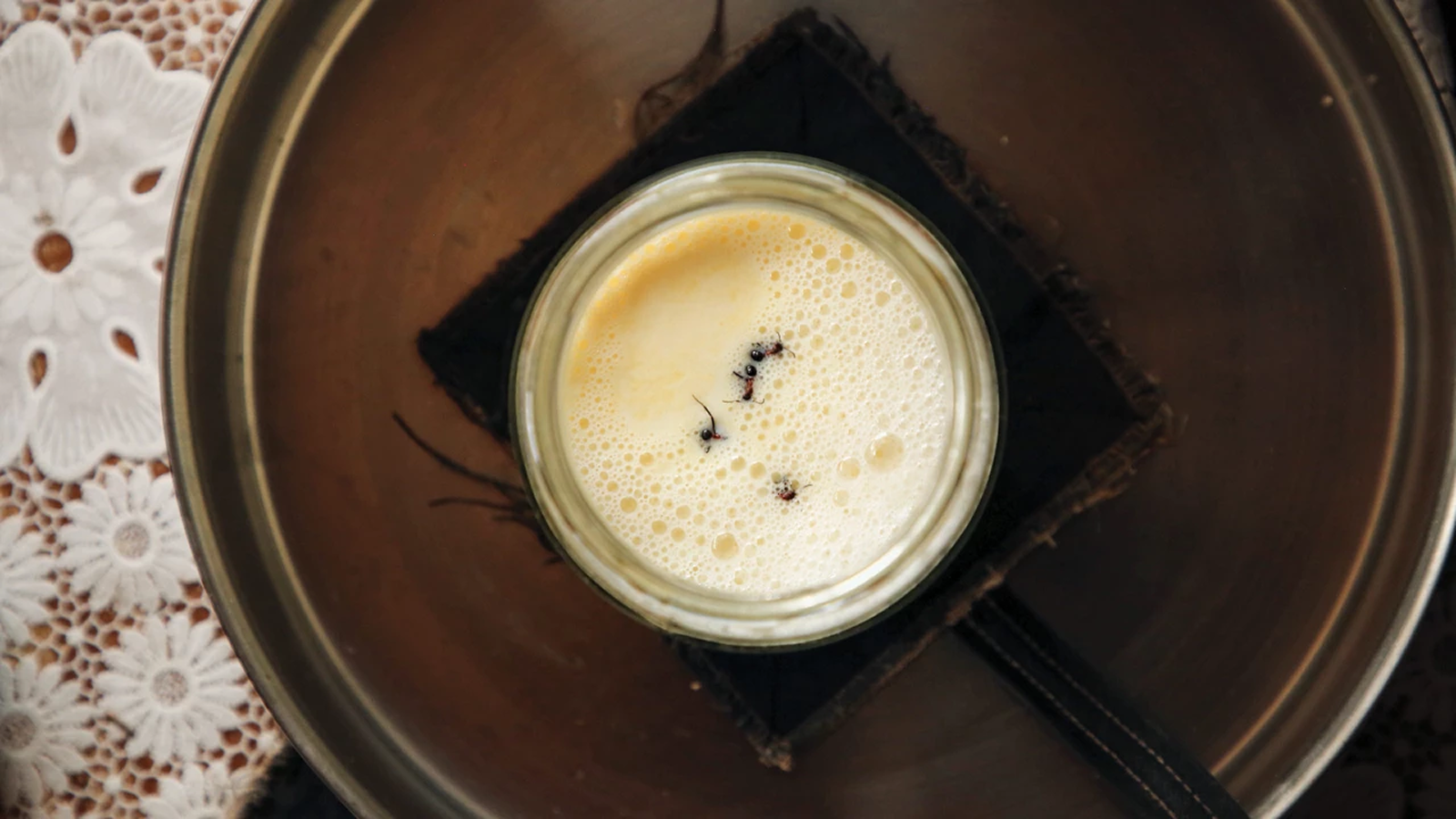Anthropologists make 'ant yogurt' from centuries-old recipe, serve it as an 'ant-wich' at Michelin-star restaurant
Researchers have revealed how adding a handful of live ants to warm milk can create yogurt.

By adding a handful of live ants to warm milk, a group of anthropologists and food scientists investigated how to make "ant yogurt" — and they ended up learning that it has the same ingredient as a popular type of bread.
The bacteria in the "ant yogurt," which they made using a traditional Balkan method, is a strain that's commonly used as a sourdough starter today, the team found. They then served the yogurt to patrons at a restaurant to showcase historical methods of fermenting food.
The process behind concocting this ant delicacy is dramatically different from how the fermented dairy food is industrially made today, the researchers wrote in a study published Friday (Oct. 3) in the journal iScience.
"Today's yogurts are typically made with just two bacterial strains," study co-author Leonie Jahn, a researcher at the Technical University of Denmark, said in a statement. The strains, Lactobacillus bulgaricus and Streptococcus thermophilus, are introduced to warm milk as a bulk starter. The bacteria ferment the sugars in the milk, producing lactic acid, which lowers the pH and increases the acidity of milk, causing the milk to coagulate. This also gives yogurt its consistency and flavor.
"If you look at traditional yogurt, you have much bigger biodiversity," Jahn said, because various bacterial strains impart different flavors and textures to the food.
Study co-author Sevgi Mutlu Sirakova, a doctoral student at Ludwig Maximilian University of Munich, previously gathered oral histories from people in Turkey and Bulgaria that described different methods of creating yogurt, including the use of red wood ants (Formica sp.) to kick-start the process. The researchers visited Sirakova's family village in Bulgaria, where locals recalled the tradition of using ants to make yogurt.
"We dropped four whole ants into a jar of warm milk by the instruction of Sevgi's uncle and community members," study co-author Veronica Sinotte, a microbiologist at the University of Copenhagen, said in a statement. After keeping the jar of milk warm in the ant mound overnight, they tried the yogurt that had formed — and described it as "slightly tangy" and "herbaceous."
Get the world’s most fascinating discoveries delivered straight to your inbox.
After making the ant yogurt, the team studied it to understand the role of the ant "holobiont," which includes both the ant and the microbial communities in and on the creature.
Chemical analysis of the yogurt revealed that the dominant bacterium responsible for fermentation was Fructilactobacillus sanfranciscensis, a species that is much better known as a key ingredient in sourdough bread. Additionally, they discovered abundant formic acid in the yogurt. Wood ants produce large amounts of formic acid in their venom gland, and they can spray it as a defense mechanism. The formic acid gave the yogurt a unique taste and texture.
"This study highlights ants as a reservoir of bacteria with potential for food fermentation, and the importance of both ant biodiversity and traditional practices in maintaining this potential," the researchers wrote in the study.
To further test the culinary possibilities of ant yogurt, the researchers partnered with Alchemist, a 2 Michelin-star restaurant in Copenhagen. The chefs created three new dishes from the ant yogurt: an ant-shaped ice cream sandwich, tangy cheeses, and a "milk wash cocktail" from a recipe dating back to the early 1700s.
But amateur cooks should not try this at home, the researchers warned, because ants can harbor parasites. The researchers used a microbiology-grade sieve to remove any potential parasites before passing the yogurt to the restaurant.
The use of ants in yogurt making remains widespread in Turkey and Bulgaria today, and now scientists understand exactly how the ants react with the milk to produce yogurt.
"I hope people recognize the importance of community and maybe listen a little closer when their grandmother shares a recipe or memory that seems unusual," Sinotte said.
Editor's Note: This story was updated at 10:05 a.m. ET on Oct. 6 to note that lactic acid lowers the pH and increases the acidity of milk, causing milk to coagulate.

Kristina Killgrove is a staff writer at Live Science with a focus on archaeology and paleoanthropology news. Her articles have also appeared in venues such as Forbes, Smithsonian, and Mental Floss. Kristina holds a Ph.D. in biological anthropology and an M.A. in classical archaeology from the University of North Carolina, as well as a B.A. in Latin from the University of Virginia, and she was formerly a university professor and researcher. She has received awards from the Society for American Archaeology and the American Anthropological Association for her science writing.
You must confirm your public display name before commenting
Please logout and then login again, you will then be prompted to enter your display name.
